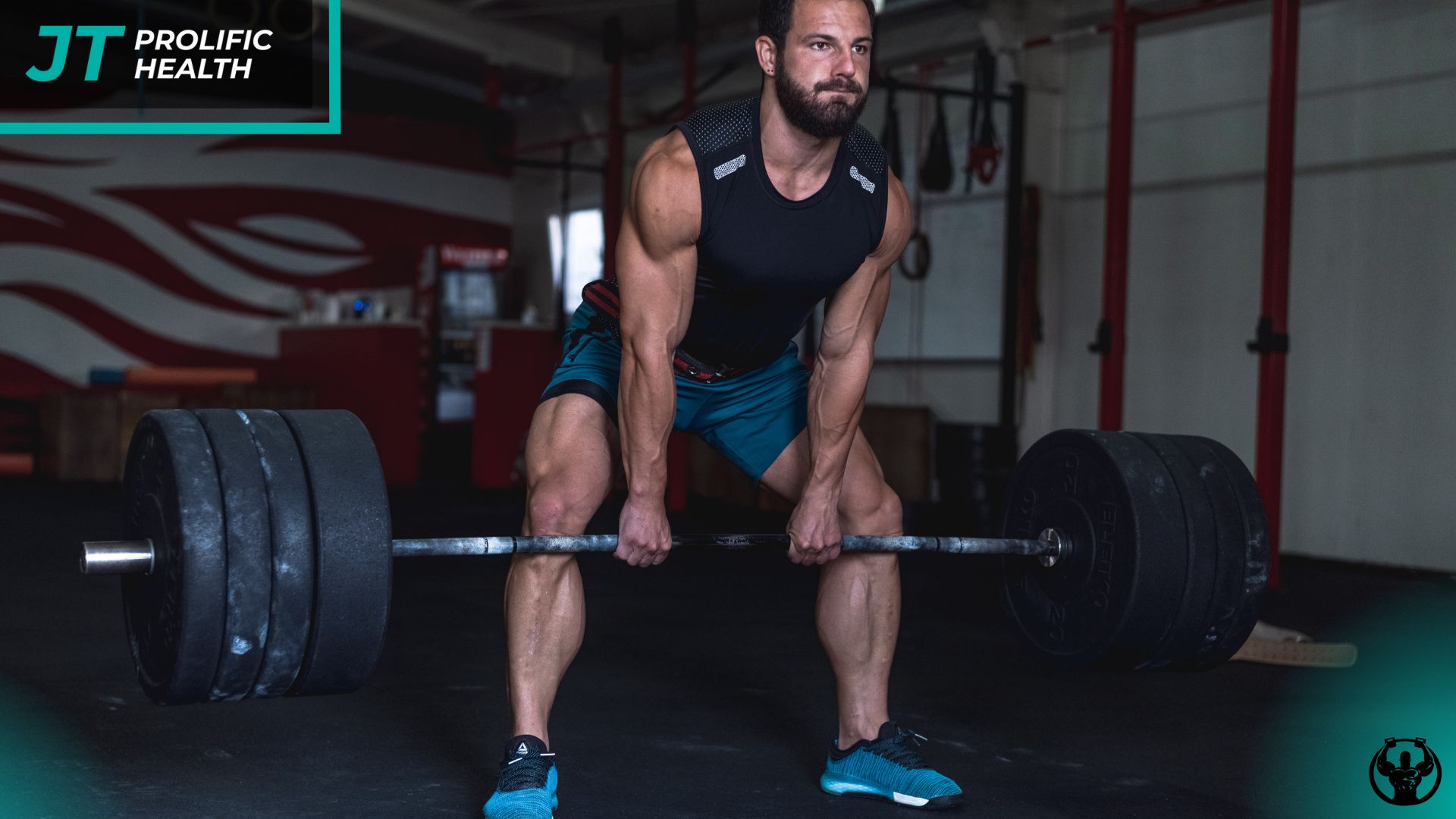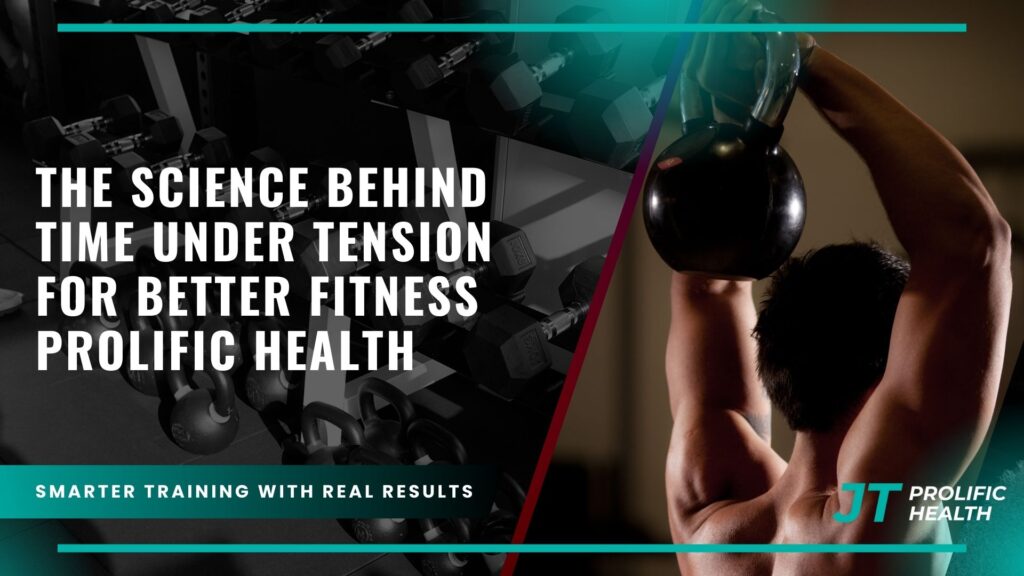Did you know that simply slowing down your lifts could boost muscle growth by up to 40%? Research reveals that how long your muscles work against resistance plays a bigger role in strength gains than previously thought. At Prolific Health, we combine cutting-edge science with practical training methods to help clients in Richmond and Vancouver achieve lasting results.
Studies show that resistance exercise triggers muscle protein synthesis, which fuels long-term hypertrophy. The key lies in maximizing the stress placed on muscle fibres during workouts. This approach isn’t about lifting heavier weights but focusing on controlled movements that challenge your body’s adaptive responses.
Our team prioritizes methods backed by peer-reviewed research. For example, extending the duration of each repetition creates metabolic stress, a proven driver of muscle development. By understanding these physiological mechanisms, you can transform ordinary workouts into growth-optimized sessions.
Key Takeaways
- Resistance training stimulates muscle protein synthesis, leading to hypertrophy over time.
- Controlled movement speed enhances metabolic stress for better growth outcomes.
- Scientific principles guide Prolific Health’s training programs in Vancouver and Richmond.
- Muscle adaptation relies on strategic stress application during exercises.
- Practical implementation beats arbitrary weight increases for lasting results.
Overview of Our Approach at Prolific Health
What separates transformative fitness results from temporary fixes? At Prolific Health, we build programs rooted in human physiology rather than social media trends. Our Richmond and Vancouver teams use resistance training strategies that align with how your body adapts to stress.


Every workout plan starts with understanding muscle response mechanisms. We focus on three pillars: controlled resistance application, metabolic adaptation triggers, and measurable progress tracking. This approach helps you work smarter, not harder, by prioritizing quality repetitions over arbitrary weight increases.
Our certified trainers combine peer-reviewed research with hands-on experience. You’ll learn why specific movement tempos enhance muscle engagement and how to apply these principles safely. Whether you’re in Vancouver or Richmond, our science-backed methods adapt to your unique needs.
- Custom programs reflecting current exercise science
- Transparent explanations of muscle development processes
- Proven resistance techniques minimizing injury risks
Connect with our British Columbia team at 604 818 6123 for realistic fitness guidance. We never promise magic solutions – just results grounded in biological reality. Our programs include private training, group strength sessions, and hybrid coaching options to suit different goals.
Understanding Time Under Tension
Have you ever wondered why some exercises yield better muscle results than others? The answer lies in how your body responds to sustained effort. This principle drives our training strategies at Prolific Health, helping clients in Richmond and Vancouver achieve measurable progress.


Definition and Key Concepts
Loaded tension duration measures how long muscles work against resistance during each repetition. Studies demonstrate that slower movements – like 6-second lifts and 6-second lowers – boost protein synthesis more than faster ones. For example, leg extensions at 30% max effort with controlled tempos outperform rapid reps by 22% in muscle-building potential.
Three factors determine effectiveness:
- Total mechanical stress per set
- Consistent fibre engagement through full motion
- Balanced focus on lifting and lowering phases
How It Influences Muscle Activation
Your nervous system recruits muscle fibres based on effort duration and intensity. Longer repetitions activate more motor units, even with lighter weights. This triggers adaptations that support hypertrophy without excessive joint strain.
Research confirms that sustained loading:
- Enhances metabolic stress for growth signals
- Improves mind-muscle connection
- Reduces momentum’s role in movements
Our Vancouver trainers teach clients to manipulate these variables safely. By mastering movement control, you stimulate growth while minimizing injury risks – a cornerstone of Prolific Health’s methodology.
Scientific Foundations of Resistance Training
How does your body decide which muscles to activate during a workout? The answer lies in neuromuscular physiology – the hidden wiring that shapes every movement. At Prolific Health, we ground our methods in peer-reviewed science to help you train smarter.


Neuromuscular Recruitment Insights
Your nervous system activates muscle fibres through motor units – bundles of nerves and cells working together. The size principle explains this process: smaller motor units engage first for light tasks, while larger ones kick in as demands increase. This hierarchy ensures efficient energy use during resistance training.
Three critical factors influence growth:
- Full recruitment of available motor units
- Sustained effort triggering protein synthesis
- Balanced focus on lifting and lowering phases
Research-Based Evidence
Studies by Henneman and others show that training to fatigue recruits more motor units, even with lighter weights. This explains why controlled repetitions often outperform heavy lifts for muscle development. Your muscles adapt through repeated challenges, rebuilding stronger fibres after each session.
Key findings from exercise science:
- Complete fibre recruitment boosts protein synthesis rates
- Neurological coordination improves with consistent practice
- Muscle architecture adapts to handle specific stresses
Our Vancouver and Richmond trainers use these principles to craft personalized programs. By aligning workouts with your body’s natural responses, we help you achieve lasting results without guesswork. Clients can also supplement with structured online coaching when in-person sessions aren’t feasible.
Exploring Muscle Hypertrophy Mechanisms
What sparks the biological changes that lead to stronger, larger muscles? The answer lies in how your skeletal muscle responds to precise mechanical demands during resistance training. At Prolific Health, we break down these processes using peer-reviewed research to help you train with purpose.
Role of Concentric and Eccentric Movements
Concentric actions occur when muscles shorten to lift weights, triggering immediate protein synthesis. Eccentric phases – where muscles lengthen under load – create micro-tears that stimulate repair and growth. Studies show combining both phases increases myofibrillar protein synthesis by 114% compared to isolated movements.
Key differences between movement types:
- Concentric efforts boost mitochondrial activity for energy production
- Eccentric loading enhances sarcoplasmic protein synthesis by 77%
- Balanced training recruits more muscle fibres overall
Physiological Adaptations
Your skeletal muscle adapts through structural changes at the cellular level. Slow-tempo training increases cross-sectional muscle area by prolonging mechanical stress. This approach elevates protein synthesis rates for up to 30 hours post-workout.
Three critical adaptations occur:
- Thickened myofibrils increase force production capacity
- Enhanced capillary networks improve nutrient delivery
- Strengthened connective tissues support heavier loads
Controlled eccentric movements prove particularly effective, generating 22% greater hypertrophy than rapid repetitions in clinical trials. These findings shape our Vancouver and Richmond training programs, ensuring every rep maximizes your biological growth potential.
Implementing Time Under Tension in Your Routine
Unlock muscle growth by mastering exercise tempo. Research confirms rep durations of 2-8 seconds optimize hypertrophy without requiring extreme extensions. Our Vancouver and Richmond clients achieve this through structured progression rather than guesswork.
Step-by-Step Execution
Begin with foundational movements to establish proper form. Reduce weights by 20-30% initially – this accommodates increased focus on movement control. Gradual adaptation prevents form breakdown while teaching your body to handle sustained effort.
- Analyze current exercise execution patterns using video or trainer feedback
- Apply 4-second lifting and lowering phases during warm-up sets
- Maintain consistent rhythm using audible cues like metronome beats
- Track total set duration instead of rep counts for precise overload
This method enhances neuromuscular coordination while minimizing injury risks. Clients report better mind-muscle connection within three sessions when following this protocol.
Practical tools like smartphone timers help maintain target durations. Pair these strategies with our certified trainers’ guidance in Richmond or Vancouver for optimal results. You can contact us to start your personalized program today.
Local Government Research and Fitness Standards
How do public health guidelines shape effective workout programs? Canadian health authorities base their recommendations on peer-reviewed studies, creating a blueprint for safe and impactful training. At Prolific Health, we align our methods with these evidence-based standards to deliver results that stand the test of science.
British Columbia’s health ministry advocates resistance protocols backed by clinical findings. Their guidelines emphasize gradual progression, proper form, and balanced programming – principles we apply in every Vancouver and Richmond session. Government research confirms that structured strength development reduces injury risks while improving metabolic health.
Three key elements define Canada’s approach:
- Exercise prescriptions matching individual capabilities
- Regular updates reflecting new scientific discoveries
- Safety benchmarks for commercial fitness providers
Our trainers integrate these standards through customized progress tracking and technique coaching. You’ll experience workouts that meet national physical activity targets without compromising intensity. This synergy between public health wisdom and practical training ensures your efforts yield measurable, lasting improvements.
Health Canada’s latest reports reinforce resistance training’s role in combating sedentary lifestyles. By following their evidence hierarchy, we help you build functional strength while adhering to nationally recognized safety protocols. This scientific alignment separates impactful fitness strategies from fleeting trends.
Optimising Rep Tempos for Growth
The rhythm of your lifts could be the missing link in unlocking advanced muscle development. Research from the Journal of Functional Morphology and Kinesiology confirms that 2-8 second repetition tempos maximise hypertrophy, debunking myths about extreme durations. Our Vancouver and Richmond trainers use this science to create customised tempo plans rather than generic formulas.
Finding Your Ideal Tempo
Your perfect repetition speed depends on three factors: training history, target muscle groups, and recovery capacity. Beginners often thrive with 4-second phases (2 up, 2 down), while advanced lifters might experiment with 6-second eccentrics. Track performance changes weekly to identify what sparks growth in your physique.
Consider these evidence-based guidelines:
- Compound exercises respond better to moderate tempos (3-5 seconds)
- Isolation movements allow safer experimentation with extended durations
- Strength-focused phases benefit from faster concentric actions
Clients at our British Columbia facilities discover their sweet spot through systematic testing. We combine progress photos, strength metrics, and perceived exertion scores to pinpoint effective timing patterns. This approach respects individual differences while staying rooted in peer-reviewed science.
Remember – no single tempo works forever. Your ideal rhythm evolves with fitness levels and goals. Our trainers help adjust these variables during check-ins, ensuring continuous adaptation without plateaus.
Resistance Training Techniques for Maximum Benefit
Proper movement execution separates transformative results from wasted effort. At Prolific Health, we treat technique as non-negotiable – your safety and progress depend on it. Our Vancouver and Richmond trainers help you master controlled execution through science-backed coaching.
Maintaining Proper Form
Quality repetitions beat heavy lifting for sustainable growth. Research shows controlled lowering phases increase muscle activation by 19% compared to rushed movements. Start with these fundamentals:
- Select weights allowing full control through entire ranges
- Engage core muscles before initiating each lift
- Exhale during exertion phases to stabilize joints
Gradual resistance increases work best when paired with form checks. Our trainers use video analysis to spot subtle breakdowns – like shoulder shifts during presses or hip thrusts during rows. This precision prevents compensation patterns that limit progress.
Systematic progression beats ego lifting every time. Clients who reduce loads by 20% while improving control often see faster strength gains. Remember: proper technique creates the foundation for all advanced training methods.
Insights from Journal Functional Morphology and Kinesiology
Cutting-edge fitness strategies require validation through rigorous scientific inquiry. The Journal of Functional Morphology and Kinesiology serves as a critical resource for understanding muscle development principles. Its peer-reviewed studies help trainers at Prolific Health refine techniques used in Vancouver and Richmond facilities.
Key Study Findings
Recent research in functional morphology reveals adaptable approaches to resistance training. Scientists analysed how different tempos affect muscle growth across 12-week programs. Their findings challenge rigid timing rules while confirming core principles:
- Total repetition duration (2-8 seconds) matters more than individual phase lengths
- Combined eccentric and concentric actions boost hypertrophy by 34% versus isolated movements
- Flexible tempo adjustments maintain progress across fitness levels
The journal’s methodology ensures conclusions withstand scientific scrutiny. Studies use EMG measurements and muscle biopsies to track cellular adaptations. This precision helps our British Columbia trainers create programs that align with biological realities rather than trends.
Practical applications emerge when laboratory insights meet gym experience. You can adjust lifting speeds within research-backed ranges without sacrificing results. This flexibility prevents plateaus while keeping workouts engaging – a cornerstone of Prolific Health’s client success.
Comparing Different Rep Tempos
Your choice of lifting rhythm directly impacts muscle development pathways. Emerging research reveals tempo variations activate unique biological responses, offering strategic advantages for different fitness goals. Let’s examine how controlled and explosive phases influence your progress.
Muscle Response to Tempo Variations
Slower eccentric phases maximize mechanical tension during muscle lengthening. Studies show this approach increases protein synthesis by 18% compared to standard speeds. The controlled lowering creates micro-tears that stimulate repair processes, enhancing structural adaptations over time.
Explosive concentric movements prioritize power generation through rapid force production. This method improves neural drive and fast-twitch fibre recruitment – crucial for athletes needing bursts of strength. Research indicates combining both approaches yields comprehensive development.
Key considerations when selecting tempos:
- Hypertrophy goals benefit from 3-4 second eccentrics with explosive lifts
- Power development thrives on faster concentric actions (1-2 seconds)
- Recovery needs increase with extended eccentric durations
A Journal of Functional Morphology study found varied tempos equally effective for growth when maintaining sufficient effort. Strategic application matters more than rigid formulas. Rotate approaches every 4-6 weeks to leverage different adaptation mechanisms while preventing plateaus.
Adapting Your Training to Prevent Overuse
How can you push your limits without crossing into dangerous territory? Our Vancouver and Richmond teams prioritize strategic failure points in your routine over unsustainable extremes. Recent studies suggest reaching failure appears more crucial than purely maximizing time tension for stimulating muscle growth. This science-backed approach helps you progress safely while respecting biological recovery needs.
Monitoring Fatigue and Recovery
Your body signals overuse through persistent soreness or performance plateaus. Track workout intensity and adjust weekly volume based on muscle recovery needs. For example, rotating focus between specific muscle groups prevents cumulative stress on joints and connective tissues.
Prolific Health clients learn to identify productive fatigue versus harmful strain. Controlled failure periods during sets, paired with adequate rest days, create optimal conditions for adaptation. This balance prevents overuse injuries while maintaining training effectiveness for long-term muscle-building goals.
Recovery tools like hydration tracking and sleep quality assessments complement your efforts. By aligning effort with your body’s repair capacity, you sustain progress without compromising safety. Our method proves that smart programming beats endless exertion every time.




